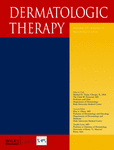Primary cutaneous T cell lymphomas: photochemotherapy immunomodulation with analysis of the inflammatory-expansive cellular dynamic
Abstract
Primary cutaneous T cell lymphomas (CTCLs) are characterized by hyperproliferation of malignant CD4+ T cells with primary localization on the skin. The common characteristics are the migration of the malignant mature T-lymphocytes into the epidermis, with hyperproliferation of malignant CD4+ T cells and epidermotropism. Sézary syndrome (SS) is the leukemic variant. It was established that CTCLs arise from a clonal expansion of CD4+ T cells with an identical rearrangement of the T cell receptor. The purpose of this study was to evaluate the immunomodulation effect of photochemotherapy-A (psoralen plus ultraviolet A (PUVA)). Pre- and post-PUVA punch skin biopsies of nine patients were stained immunohistochemically for CD34+, CD8+, CD7+, CD16+, CD56+, CD1a+, Bcl2+, p53+, CD45RA+, and CD45RO+ cells. The results showed a pre-PUVA cells/mm2 without significant difference among expansive or reactive cells. Post-PUVA analysis showed a significant decrease in the mean of expansive-reactive cells. PUVA immunomodulated decreasing cellular infiltrate. These findings could contribute to the comprehension of how PUVA acts. We achieved ectoscopic clearance of the lesions, although post-PUVA, there still was a mononuclear pathological infiltrate. This result demonstrates that the PUVA treatment should only be withheld when the histological analysis is normal.




